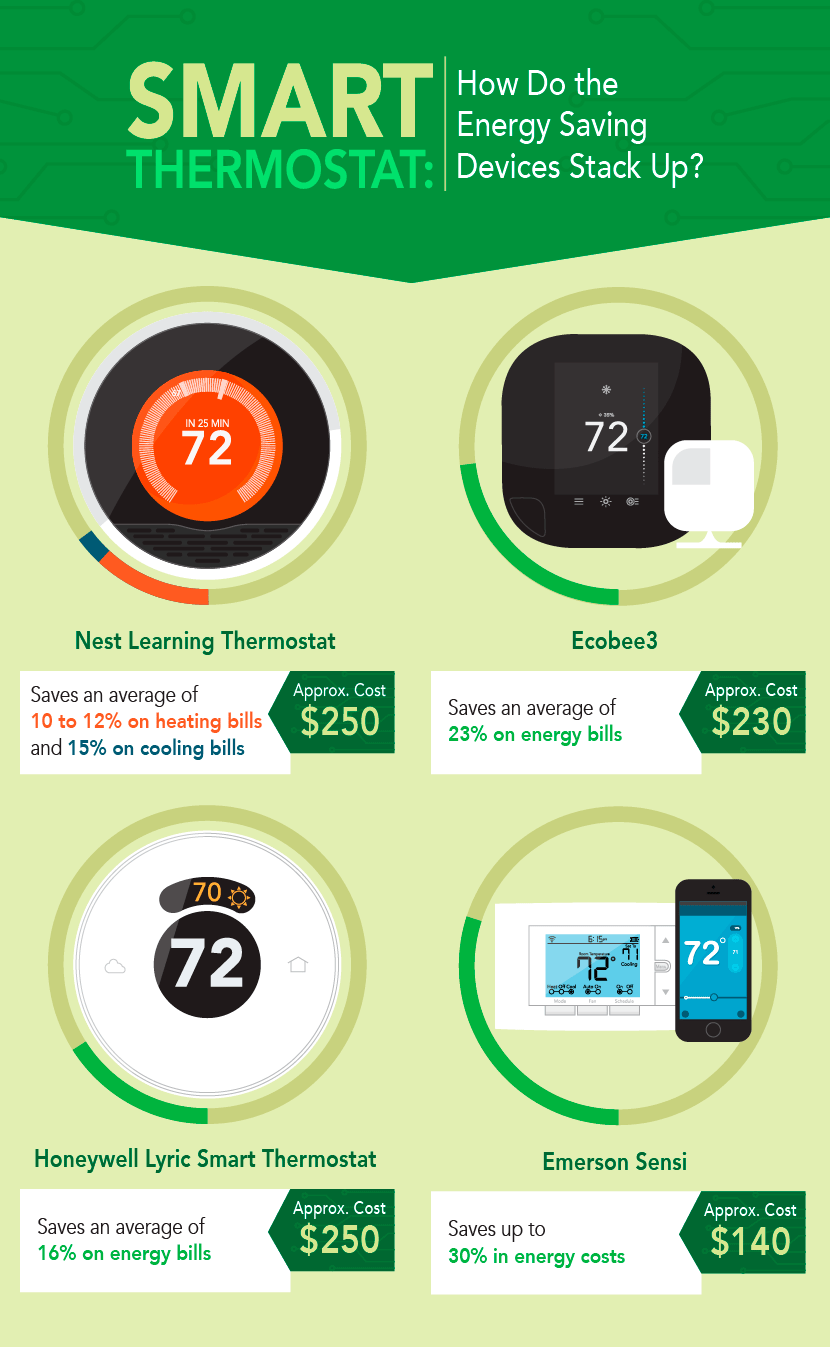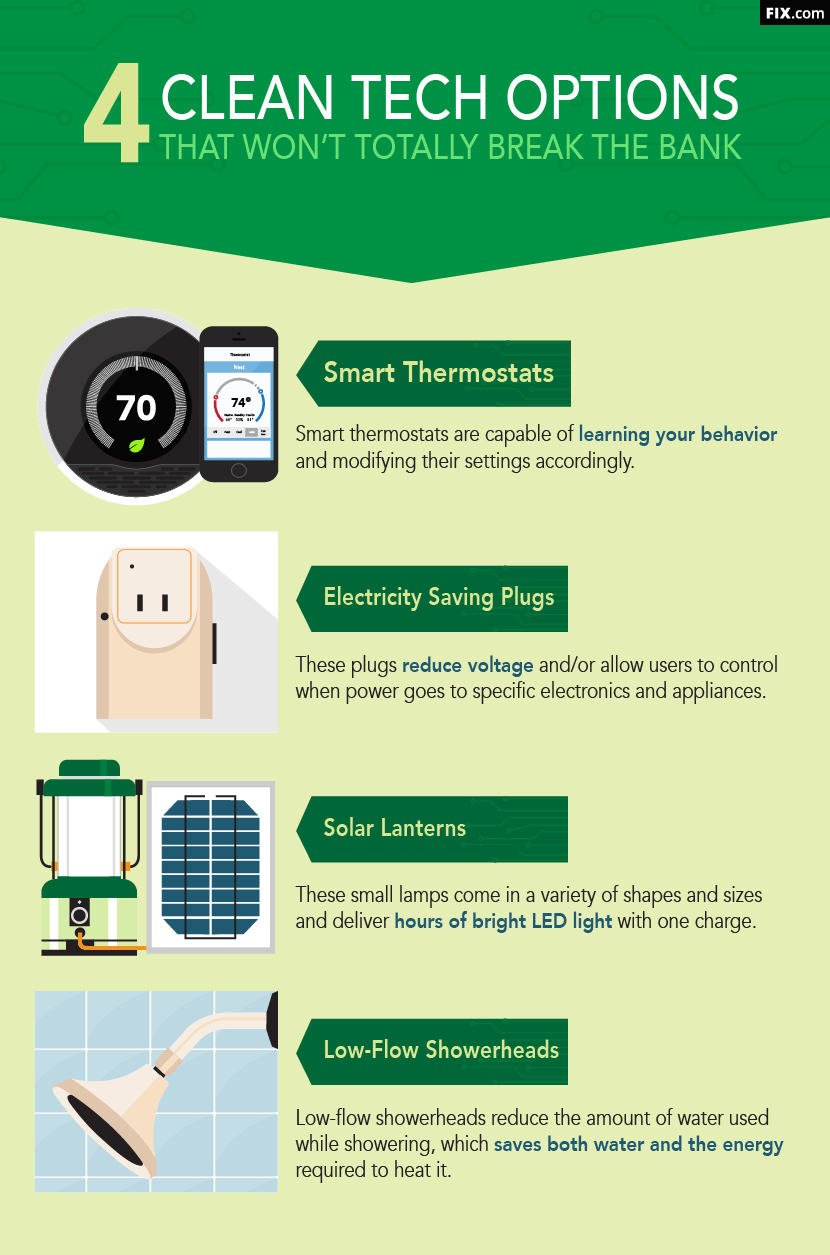Green Living Tech That Won’t Totally Empty Your Wallet
With millions of people able to acquire an abundance of technologies that require energy and water to
function – at a time when both are increasingly scarce –it is essential for new devices to consume as few natural resources as possible.
Even the most prudent water conservationist will be powerless against leaky toilets, sinks, or showerheads that
unnecessarily gush gallons of water with every use. According to the Environmental Protection Agency, leaks
alone waste 10,000 gallons of water per year in the average American home.http://www2.epa.gov/learn-issues/learn-about-water Multiply that by the 319 million
Americans in 2014, and we’re looking at billions of gallons of water wasted – mostly as a result of shoddy design.http://quickfacts.census.gov/qfd/states/00000.html
Similarly, many modern appliances, such as toasters, are designed to use less energy than their predecessors.
But if we keep it plugged in after breakfast, it will continue to consume energy, even when it’s not toasting anything.
(This is also known as vampire power.) In May, the Natural Resources Defense Council reported this standby power consumption costs
Americans $19 billion every year.http://www.nrdc.org/energy/home-idle-load.asp
That’s more than half the $30 billion required to feed all of the world’s hungry.http://borgenproject.org/the-cost-to-end-world-hunger/
Those are big numbers. But what can we do about it? If you would love to slash your tech-related environmental
footprint but have a finite cash flow, we’re here to help.
Clean technology
At last, we have options. Particularly for those of us in the western world, businesses large and small
recognize the economic and environmental advantages of low-cost technologies that help reduce energy and water waste.
And those tech options are proliferating. We may not be able to afford a rooftop solar array to go completely off-grid,
but there are better choices for things within our control using innovations like smart thermostats or solar-powered lanterns.
What is now referred to as green or clean technology uses the smallest possible volume of resources to get the job done,
whether to transmit energy to charge a laptop or pump water through a showerhead. As an added bonus, many green tech brands
ensure devices quit drawing power or dripping water when no longer necessary. For tech newbies, sorting through gimmicks and
genuinely useful tools can be expensive and time-consuming. We broke down five cutting-edge, clean-tech gadgets that bring
you closer to your dream of having the footprint of a feather. Best of all, they’re easy to install and won’t break the bank.
Smart Thermostats

Have you ever realized how crazy it is to leave the heat on after you vacate the house?
That’s a bit like our ancestors cutting down all the neighborhood trees to heat an empty cave.
Most people have access to technology that allows them to program thermostats to shut off at certain
times of day and therefore reduce energy waste. But the traditional programmable thermostat can only do so much.
The Nest, by contrast, is a smart thermostat capable of learning your behavior and modifying its settings accordingly.https://store.nest.com/product/thermostat/
If you come home from work and typically adjust your thermostat to 70 degrees Fahrenheit and then dial it down to 65 degrees
at bedtime, the Nest eventually catches on and makes the change for you. And when you leave the house, it automatically turns itself down.
It has other impressive features too. For example, when the Nest “sees” you approaching, it automatically illuminates itself so the
screen is easier to read. It can also be controlled remotely so you can adjust the temperature of your home via a cellphone or laptop.
The Nest, which was designed by former Apple engineers and is owned by Google, is a fairly pricey device at $250. But it’s
absolutely worth the investment. And if you think you have insufficient expertise to replace an existing thermostat, the company
offers straightforward installation tutorials that should boost your confidence.https://www.youtube.com/watch?v=H2PWdzYuiqc
For a little bit less money (and, dare we say, style), there are several other smart thermostats on the market.
Honeywell’s Wi-Fi Smart Thermostat, for example, won’t learn your temperature habits, but if you have different
temperature preferences for different times of the day, it allows you to program them down to the hour for up to seven days.http://www.amazon.com/Honeywell-Wi-Fi-Smart-Thermostat-RTH9580WF/dp/B00FLZEQH2
It has a user-friendly screen, is easy to set up, and features the kind of built-in flexibility most homeowners appreciate.
Plus, this device acts as a small weather station that provides indoor and outdoor temperature and humidity readings, and warns if a storm is coming your way.
Electricity Saving Devices
Despite being somewhat revolutionary as the first technology “to bring intelligence to AC/DC power adaptors,”
this particular green gadget integrates with existing electronics to enhance their performance.http://greenplug.us/faq For example, the
Green Plug is a voltage reducer that can assess which devices plugged into a particular port require energy,
and deliver it just to those items, while at the same time shutting down ports that do not require energy.
This alone results in 75 percent energy savings, according to the company.https://shop.smartthings.com/#!/products/smartpower-outlet Smart power outlets are similarly
effective, albeit for small devices. The tiny ZigBee outlet, which will set you back about $55, converts any
wall socket into a smart outlet that allows users to control specific home appliances, such as lamps or coffee
machines, from the comfort of their portable smartphones. Better yet, if you don’t mind compromising on the bulky
aesthetics you can switch to lamps that are completely solar-powered. With prices starting at $30, Tricklestar offers a
variety of advanced power strips that not only manage the power load of computer monitors, televisions, and other electronics,
but also feature a built-in surge protector for stormy days.http://www.tricklestar.com/us/products-1/advanced-powerstrips/7-outlet-advanced-powerstrip.html
Solar Lanterns
In the early days of solar technology, owning a lantern powered by the sun was an exorbitant luxury,
mostly because of high cost. Solar cells have since evolved to become more flexible and efficient, less
expensive, and therefore more ubiquitous. There are a plethora of affordable models to choose from.
For starters, the d.light S2 learning lantern – a compact, portable option – delivers four hours of bright LED light with a single charge.http://www.dlight.com/solar-lighting-products/single-function/dlight-s2/
The d.light lantern has a triangular metal stand that provides a ton of flexibility. Hang it on a stand or hook for use as a hanging
lamp, carry it around outside in the dark, or simply place it on a picnic table. For $13 to $15, this rugged lamp helps wean
you off the grid while gradually slicing down your utility bill.http://www.dlight.com/solar-lighting-products/single-function/dlight-s2/
Other solar lanterns on the market, designed for survivalists, are equally useful around the house
or on camping trips. The $19 Ivation inflatable lantern, for example, is waterproof and floats.
It also emits about 12 hours of light from an eight-hour charge in the sun, according to the manufacturer.http://www.amazon.com/Ivation-Inflatable-Waterproof-10-LED-Lantern/dp/B00NH5K7RG
The Ivation features two brightness modes that allow users to conserve energy, and a strobe for emergency situations.
When you don’t need it, this affordable LED lamp collapses, so it won’t take up a whole lot of space either.
Low Flow Showerheads

Standard showerheads in the United States use 2.5 gallons of water per minute, which is more water than some
people in the world have for an entire day.http://www.epa.gov/watersense/products/showerheads.html Shower heads with the WaterSense label only emit 2 gallons per minute,
which is still a ridiculous amount of water to use. The EPA claims most households would save up to 2,900 gallons of
water a year by installing them. And since low-flow showerheads reduce the demand on water heaters, they can also save
370-kilowatt hours – or enough energy to power the average home for 13 days – every year.http://www.highsierrashowerheads.com/ High Sierra showerheads go
a step further by using only 1.5 to 1.8 gallons of water per minute. They are simple to install and easy to maintain,
and their patented nozzle technology produces a steady stream of water (the company says it won’t feel like a trickle)
while still resulting in roughly 40 percent water savings. While the $35 price tag may seem steep, the long-term environmental
savings are priceless. And the Niagara Earth Massage low-flow showerhead, which sells for just over $8, uses 1.25 gallons per minute,
saving up to 30 percent in energy and water.http://www.amazon.com/Niagara-Earth-Massage-1-25GPM-showerhead/dp/B003UQ17O4
Solar Windows
Solar windows will eventually revolutionize the renewable energy industry. Though this product is not yet on the market,
tech sites are already hyping their abilities. Special transparent liquids create electricity-generating glass windows,
which have been successfully tested in a variety of colors. Replacing existing windows with these can produce energy for a
fraction of the cost of installing rooftop solar panels. The windows are capable of absorbing solar energy whether placed
in the shade or direct sunlight. They even function under artificial light.http://solarwindow.com/technology/ According to the company website,
SolarWindow outperforms conventional photovoltaic cells 50-fold. And what may normally take 5 to 11 years to pay back can only take one year.

Take Baby Steps
It’s tempting to want a 100 percent solar-powered, off-grid home on 20 acres of fertile land (there is certainly nothing wrong with dreaming).
But while those plans are still hatching, taking baby steps to reduce your environmental impact can really add up. Randy Miles, LEED AP-certified sales
director at Intelli-Hood, Melink Corporation, sums it up well: “Don't let energy efficiency strategies become overwhelming. At home and in life,
it's the small things that add up,” he says. “Practice good habits, lead by example, and change the world...simple.”https://www.linkedin.com/pulse/20141002144909-45117570-conquering-energy-efficiency-baby-steps
Embed the article on your site

